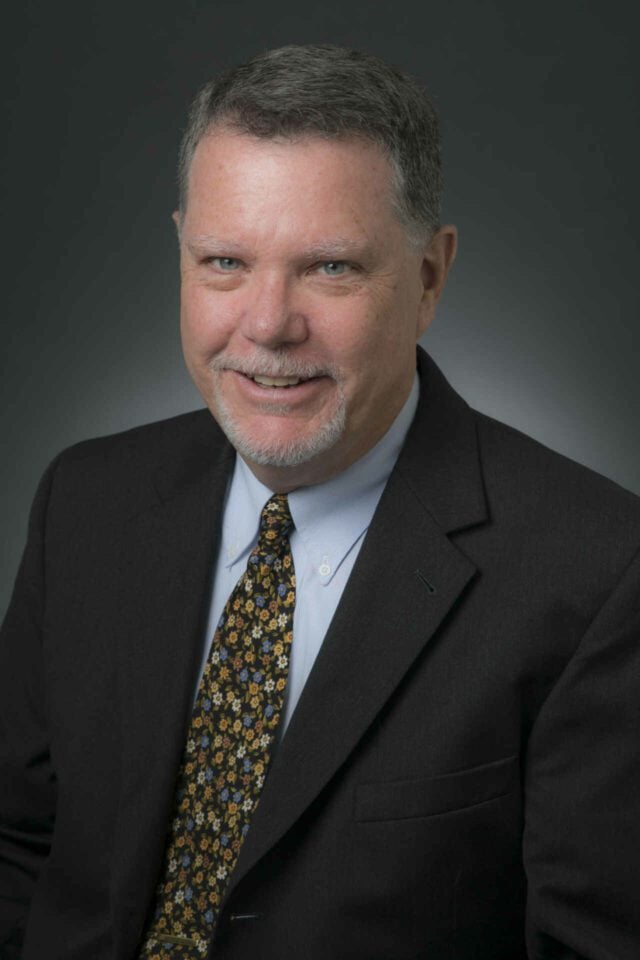Show Notes
Advancing Hydraulic Engineering for Infrastructure Resiliency is the theme of this year’s National Hydraulic Engineering Conference in Atlanta, Georgia.
RK&K is proud to be a sponsor of the conference, hosted by the School of Civil and Environmental Engineering at the Georgia Institute of Technology and the Georgia Department of Transportation. It “addresses the challenges transportation agencies face constructing, maintaining, sustaining, and improving hydraulic structures in the present and future physical, natural, social, and economic environments.”

David Black, PE – Project Delivery Leader
Project Delivery Leader David Black, PE was invited to discuss RK&K’s award-winning partnership on the Minebank Run Restoration and Water Quality Improvement project with the Maryland Department of Transportation State Highway Administration (MDOT SHA). MDOT recently honored the project with its Environmental Excellence Award.
The project incorporated the restoration of a 1,490-foot reach of Minebank Run and two unnamed tributaries in Baltimore County, Maryland to repair severe erosion along Interstate 695 to meet stream and wetland mitigation requirements.
RK&K was responsible for the overall project management, stream design, erosion, and sediment design, natural resources evaluation/permitting (including compensatory wetland mitigation), geotechnical analysis, and structural design, along with preparing construction documents and conducting public outreach. This work was led by RK&K’s Water Resources-Transportation Group in Baltimore, with support from the Natural Resources, Geotechnical, Structures, and Construction teams.
The comprehensive design approach integrated the stream restoration with sanitary sewer relocation, outfall stabilization, slope repair, and stormwater facility construction. Through state-of-the-art 2D hydrodynamic modeling, RK&K created an integrated stream and riparian wetland floodplain complex that resulted in a resilient and sustainable channel, significant sediment reduction, and the creation of stream and wetland credits.
We chatted with David to discuss how the latest technology helps develop sustainable and resilient design solutions for restoring lost functions of a stream corridor within a highly urbanized watershed.
David, thanks for chatting with us. Resiliency is a buzzword around projects right now. Describe the importance of resiliency in civil engineering and design.
Resiliency is a big word these days, sometimes difficult to define for all situations. As it pertains to civil engineering and design, resiliency is increasing service life to transportation structures and features… considering changing climate conditions, such as increased rainfall depths and intensities. Resiliency considers vulnerabilities and risks then adaptations to the identified stressors. The bottom line is considering resiliency helps State DOTs with reduced costs and future maintenance.
The Minebank Stream Restoration project was awarded for its use of innovative design strategies and technology to achieve multiple environmental goals within one contract. What creative solutions did the team incorporate to solve the unique challenges of this project?
Minebank Run has a component of compensatory mitigation for another MDOT SHA project in the Baltimore region. Because of the historical impacts on the Minebank Valley, clay corps and groundwater dams were used to assure higher groundwater elevations than our original studies predicted. Since wetland mitigation sites require 10 years of monitoring, reliably high groundwater was needed to achieve the plant species typically found in wetlands. While previous stream restoration efforts up and downstream of this project location used a traditional ‘natural channel design’ technique, this project targeted more of a floodplain restoration approach, which is expected to allow overbank areas to become lusher and more vibrant over time. MDOT SHA expects water quality improvements to increase over time and plans to have local experts study post-restoration conditions for years to come.
How do sustainability and resiliency translate to cost savings in construction projects?
Sustainability and resiliency can be a process that identifies vulnerabilities and then quantifies risks to adapt to expected future changes. Considering these expected future changes will hopefully reduce returning to a site repeatedly for maintenance, long-term costs would be lowered. This increases safety, which is challenging to monetize.
In what ways has resiliency evolved how the team approaches projects?
Our team is still evolving on how to respond to resiliency, and we expect that to continue in the coming years. MDOT SHA, the owner of the Minebank Run project, is a progressive client of ours that has considered resiliency before the term became a buzzword. We typically research historical impacts on landforms that may have consequences on our client’s bridge designs and river/channel conveyance. Our stormwater designs have been considering more sustainable ways to reduce downstream erosion and flooding using techniques intended to mimic nature. We expect these techniques to adapt to changing rainfall patterns. RK&K has been finding ways to use our staff’s expertise to better serve our clients along these lines as the industry decides accepted standard practices. We have very smart people at RK&K, which makes each day of work exciting!
How do you see resiliency and sustainability weaving into design and construction in the years ahead?
We have had recent discussions with another client, Maryland Transportation Authority (MDTA), on this topic during our work on the JFK Highway (I-95) improvements we recently completed. MDTA is finding ways to incorporate resiliency into the design that also addresses state stormwater/waterway requirements. For example, MDTA is considering adding additional culvert barrels and then temporarily blocking them until future needs may require opening them. I have had similar discussions with MDOT SHA. I feel there are many more discussions needed to determine the end of this story.
The project is an example of a holistic approach and creative integration of transportation infrastructure safety improvements and resiliency upgrades with ecological restoration and environmental enhancement of natural resources within the community.
Ready to work with us? Get started today!


